Cover Story: Salaam Pakistan
By Newsline Admin | News & Politics | Published 13 years ago
Sixty-five and alive. Dismembered before your 25th birthday, but alive.
Fragmented by sectarian and ethnic strife, by an escalating conflict between the pillars of the state, by targeted assassinations and turf wars between political party cadres and score-settling desperados from the growing ranks of the disgruntled and disenfranchised, and riven by an ever-yawning chasm of economic disparity, you survive.
Trapped by growing religious extremism, trapped in a time-warped sadistic, misogynistic feudal-tribal social order, in a war not your own — its collateral damage the lives of your sons and daughters — and still you survive.
Afflicted with the cancers of corruption and cronyism, staring international isolation in the face, you live to tell the tale.
Sixty-five and alive.
Salaam Pakistan.
Salaam to your people who face insurmountable odds and still believe.
They believe despite the fact that 6,303 Pakistani citizens became victims of terrorism-related violence, of target killings, sectarian assassinations, drone attacks and suicide bombers in 2011, while scores more were gravely injured.
Despite the fact that 2,500 were reported dead in similar circumstances until July 2012, and many times that number wounded. (Source: South Asia Terrorism Portal).
Ironically, Karachi’s killing streets claimed three times the number of lives than did drone attacks in the tribal areas in 2011.
No surprise then that today Karachi ranks as the fifth most dangerous city in the world. Conspicuous by their absence in this situation, meanwhile, are the long marchers. While there are calls for anti-drone protests and they do resonate, as do the ones eschewing either USA, Israel or India, or the ‘unholy nexus’ of all three — usually cited as the roots of all evil done unto the ummah — it is rare to hear any diatribe emanating from the bearded brigade condemning the cold-blooded murder of Muslim Pakistanis by Muslim Pakistanis, let alone the murder of Pakistani minorities.
In the country’s war with itself, also lies a murky grey area: the black hole into which have disappeared scores of missing people. According to data compiled by the Human Rights Commission of Pakistan, based only on the cases that have been fully verified — although the actual number of the missing is estimated as much higher, and there are no figures for 2008 — 178 people from all four provinces of Pakistan went missing since 2007, the majority of them from Balochistan.
Alarming as the figures for the dead and missing, the numbers reflecting Pakistan’s economic indicators are also cause for grave concern.
The figures since democracy returned to the country are telling. In the past four years, the Pakistani rupee, which had remained stable at around Rs.60 against the dollar for several years, has been devalued by more than 50%. Currently, the rupee is hovering at Rs.94 plus to a dollar and it is expected to plummet further in the near future as foreign exchange reserves groan under mounting pressure on account of foreign loan repayments and an escalating import bill.
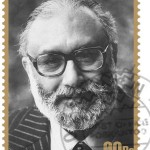 Foreign direct investment (FDI) meanwhile, has plunged to a low of USD 0.812 billion in fiscal 2011-2012, from a relatively healthy USD 5.15 billion in 2007-2008. Ergo, a low-growth, high-inflation cycle, with growth currently registering at two per cent, as compared to 7.0% five years ago, and inflation jumping into the double digits from 7.9% in 2006-2007.
Foreign direct investment (FDI) meanwhile, has plunged to a low of USD 0.812 billion in fiscal 2011-2012, from a relatively healthy USD 5.15 billion in 2007-2008. Ergo, a low-growth, high-inflation cycle, with growth currently registering at two per cent, as compared to 7.0% five years ago, and inflation jumping into the double digits from 7.9% in 2006-2007.
While there is no denying that Pakistan’s economic situation cannot be seen in isolation, with Europe in the doldrums, and the United States, China and India also in a slow-down, Pakistan’s macro-economic picture has been a virtual riches to rags saga, which began long before the global meltdown.
According to the United Nations Development Programme (UNDP), Pakistan’s Human Development Index (HDI) — ie its health, education and income — stood at 0.456 in 2011, as compared to South Asia, which registered 0.548 for the same period.
 The figures for central government expenditure between 2000-2009 on health (1%), education (2%) and defence (13%) are a clear indicator of the state’s priorities.
The figures for central government expenditure between 2000-2009 on health (1%), education (2%) and defence (13%) are a clear indicator of the state’s priorities.
A natural corollary: those living below the poverty line in Pakistan — ie below $1.25 per day — now number 22.6% of the country’s population.
No wonder then that Pakistan ranks 145 out of 187 countries on the HDI scale.
And while just the business of survival becomes more fraught each day with the cold, hard numbers staring every Pakistani in the face, there are innumerable intangibles that compromise manifold the daily quality of life for the common man.
Bedevilled by farce played out as politics, by a government that seems to have abdicated all responsibility for education, health, welfare and security to the private sector, by an over-reaching judiciary, and perhaps most chilling of all, growing ideological regressivism and extremism, existence in the Land of the Pure has been reduced to a virtual luck of the draw. The in-your-face fallout are the outright assassinations — the bombs, the targeted killings, the suicide attacks. More insidious, an increasingly pervasive threat. Minorities are the visible victims as the number of those killed, the growing incidence of blasphemy cases registered against them, and the incidents of desecration of their places of worship mount daily, but increasingly register as barely a blip on the nation’s consciousness radar. The flight of minorities to any country that will have them leaves Pakistan bereft of much of its culture and colour. But that is just one part of it. As Salmaan Taseer’s murder by his bodyguard demonstrated, no one is safe from the charge of heresy.
And the Talibanisation of society renders even the most vulnerable of Pakistan’s citizens more defenceless. Polio, 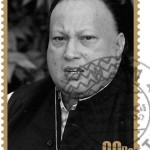 once said to have been eradicated in the country, is back and burgeoning. Touted by the rabid right as the handiwork of “anti-Islam” western NGOs and governments and with sporadic attacks on doctors and staff administering the drug, polio vaccination programmes have come to a grinding halt in some parts of the country, with various foreign governments now threatening to disallow all travellers coming from Pakistan from entering their borders if remedial measures to eradicate polio by 2013 are not put in place immediately.
once said to have been eradicated in the country, is back and burgeoning. Touted by the rabid right as the handiwork of “anti-Islam” western NGOs and governments and with sporadic attacks on doctors and staff administering the drug, polio vaccination programmes have come to a grinding halt in some parts of the country, with various foreign governments now threatening to disallow all travellers coming from Pakistan from entering their borders if remedial measures to eradicate polio by 2013 are not put in place immediately.
The international pariah status plays out in other terms as well, with bad press just a minor irritant. The proverbial begging bowl we have so unabashedly continued to carry, even as we decry the source of those donations we seek, even as we scream ‘sovereignty,’ may soon be a relic of the past — not out of choice. Living under the false assumption of our own ‘strategic and geopolitical importance,’ to a world that is changing at the speed of light, we, the nation and all governments past and present alike, tend to ignore the ominous signal being emitted from donor nations: ‘Enough already!’
Ostrich-like we choose to ignore also the writing on the Baloch wall: ‘Enough already!’ The poorest province in Pakistan, with ironically the richest resources, may understandably, have reached breaking point.
Any foreign hand could not have done a better job of dismantling the country as we have done ourselves.
And yet, Pakistan ploughs on. And unarguably exists because of its most vital asset: its people.
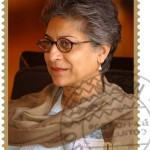 So Salaam to the Pakistani. Salaam to those who lived, who dared to dream and made the dreams real. Salaam to founding father Mohammed Ali Jinnah; to OPP’s Dr Akhtar Hameed Khan whose vision transformed one of the world’s largest slums into a habitable, self-sustaining community, to Nobel laureate Dr Abdus Salam whose shameful exile to foreign lands purely because of his faith never diminished his passion for Pakistan.
So Salaam to the Pakistani. Salaam to those who lived, who dared to dream and made the dreams real. Salaam to founding father Mohammed Ali Jinnah; to OPP’s Dr Akhtar Hameed Khan whose vision transformed one of the world’s largest slums into a habitable, self-sustaining community, to Nobel laureate Dr Abdus Salam whose shameful exile to foreign lands purely because of his faith never diminished his passion for Pakistan.
Salaam to Faiz Ahmed Faiz, who gave voice to many generations’ angst, anger and hope, to internationally revered scholar and intellectual Dr Eqbal Ahmed, to sufi maestro Allan Fakir, who kept the soul song of Sindh alive, to Nusrat Fateh Ali whose stirring qawwali still resonates across the globe, to Iqbal Bano, Nur Jehan and Mehdi Hasan whose magic reverberates across the subcontinent and beyond, to iconic artist Abdur Rehman Chughtai and ‘holy sinner’ Sadequain, to Arfa Karim Randhawa, who at nine became the world’s youngest ever Microsoft certified professional, and to many, many others now past.
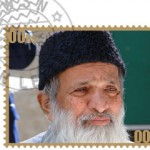 And salaam to those who never say die. To quintessential humanitarian Abdul Sattar Edhi, who straddles the world like a colossus, feeding the hungry, giving balm to the infirm, providing shelter to the abandoned, and burying the dead.
And salaam to those who never say die. To quintessential humanitarian Abdul Sattar Edhi, who straddles the world like a colossus, feeding the hungry, giving balm to the infirm, providing shelter to the abandoned, and burying the dead.
Salaam to Dr Adeeb Rizvi of the SIUT, who spurns fame and fortune to serve those who have no other recourse, to internationally renowned human and women’s rights activist, Asma Jahangir, to Abida Parveen who defies the norm and breaks the barriers even while epitomising tradition, to award-winning authors Bapsi Sidhwa, Danial Mueenuddin, Mohsin Hamid, Kamila Shamsie andMohammed Hanif, to Mukhtaran Mai who challenged a pernicious feudal order. Salaam to the amazing, awesome Khans of squash, to the Khan of cricket, Imran, to Oscar-winning filmmaker, Sharmeen Obaid Chinoy.
Salaam to the people of Swat who staved off the Taliban threat and reclaimed their land. To those who risk their lives 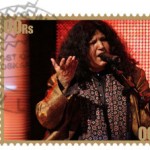 daily to keep us safe. And salaam to so many more unsung heroes — those Thomas Gray could be writing of in his Elegy: “full many a gem of purest ray serene, the dark unfathomed caves of ocean bear, full many a rose is born to blush unseen and waste its sweetness on the desert air.”
daily to keep us safe. And salaam to so many more unsung heroes — those Thomas Gray could be writing of in his Elegy: “full many a gem of purest ray serene, the dark unfathomed caves of ocean bear, full many a rose is born to blush unseen and waste its sweetness on the desert air.”
And so, because of the gems, unfathomed and unearthed alike, Pakistan ploughs on.
It survives because its rich, its middle class, even its most wretched — and increasingly its young — have taken on the mantle of saviour. In the absence of good governance, the onus falls on the people, and the private sector has certainly stepped in. There are the endless welfare trusts — The Citizens Foundation, The Kidney Centre, the Layton Rahimtoola Benevolent Trust, Special Olympics Pakistan, the Edhi Trust, the Aga Khan Development Network, Khaana Ghar and scores of other ones aiming to ameliorate the lot of those living on the 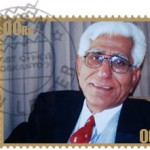 fringe. But never perhaps, has Pakistani philanthropy been more evident then at the time of national crises. Floods have devastated huge swathes of the country and earthquakes ruptured lives and lands, but at times like this, the hearts of the 180 million of this land have beat as one.
fringe. But never perhaps, has Pakistani philanthropy been more evident then at the time of national crises. Floods have devastated huge swathes of the country and earthquakes ruptured lives and lands, but at times like this, the hearts of the 180 million of this land have beat as one.
And apparently so too, the hearts of those long gone — the Pakistani diaspora. Given the ever-increasing size of the remittances in recent years, who can say expatriates do not ‘cast a longing, lingering look behind?’
Not for nothing then does Pakistan rank as one of the world’s biggest internal donors.
Pakistan survives because its children aspire, they struggle, they succeed.
A case in point: Peache Niche, an NGO aiming to become a centre of the country’s evolving civil society, and its project T2F, the brainchild of Sabeen Mahmud, symbolise the other, hope-inspiring face of Pakistan. T2F is, by giving a forum to a new generation of philosophers, painters, authors and poets, reinventing and rejuvenating the best tradition of a dying chai house culture. And ventures like Obaid Chinoy’s CAP are doing the desperately needed task of archiving Pakistan’s history.
There is also a glimmer of hope on the academic front. As the country’s established business and internet technology schools increasingly gain international acceptance, new ones have begun to emerge, each promising — and more often than not, delivering — world-standard quality education.
Pakistani O and A level students, meanwhile, shine, often garnering among the highest scores in the world for those exams. But perhaps the growing number of Pakistani students who gain admission to universities across the globe, who thrive in those challenging academic environments, is the best testimony to such achievement.
Education aside, an increasing social conservatism notwithstanding, and the rantings of the self-appointed custodians of morality apart, Pakistan has also done well in the fields of music, art and fashion. In recent years, the country has witnessed a veritable renaissance in the music industry, exemplified best perhaps, by Rohail Hyatt’s Coke Studio.
Pakistani art too has come of age, with local artists showcasing in galleries across the globe, in auction house like Sothebys, Christies and Bonhams, with a growing market for their work at home and abroad, with a proliferation of galleries springing up in all the country’s urban centres, new art publications and even an art movement for and of the people.
The business of fashion meanwhile, flourishes. The demand for designer-wear — couture and prêt alike — goes viral, as the industry garners mounting recognition in Pakistan and in fashion capitals around the world.
And young entrepreneurs venture into daring new home-grown businesses, on ground and online, while others bring home successful international franchises, situating them in any one of the new state-of-the-art malls that have begun to dot Pakistan’s urban landscape.
Meanwhile, the media, good bad and ugly, is unarguably vibrant and manages to have its say. And even if ratings are its primary concern, in all the sound and fury it emits, the truth does often out.
So Salaam Pakistan, salaam to those who keep hope alive, who dare to dream and take their aspirations for a walk, who make good things happen. Salaam to the other side of midnight.
And here’s to another 65!
This story was originally published in the August issue of Newsline as the cover story under the headline “Salaam Pakistan.”


